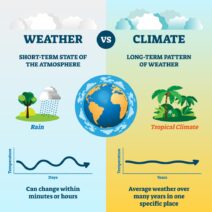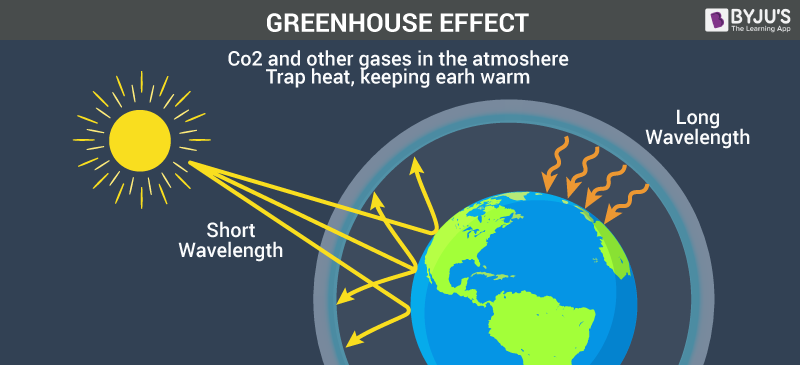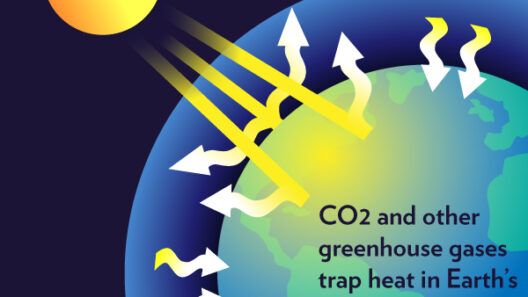The discourse surrounding climate change often gravitates towards the gases that exacerbate the greenhouse effect. However, understanding which gases do not contribute to this phenomenon is equally vital. This exploration sheds light on non-greenhouse gases, illuminating their roles—or lack thereof—in climatic modulation.
To begin, it is essential to delineate the gases that play a predominant role in the greenhouse effect. Those typically cited include carbon dioxide (CO2), methane (CH4), nitrous oxide (N2O), and various fluorinated gases. In juxtaposition, certain gases inhabit the atmospheric landscape without inducing any significant warming. This article elucidates the characteristics and implications of such non-contributory gases.
The Greenhouse Effect: A Brief Overview
At its core, the greenhouse effect refers to the process by which certain gases in the Earth’s atmosphere trap heat, thus warming the planet. This natural phenomenon is fundamental for maintaining a habitable temperature but becomes perilous when augmented by increased concentrations of greenhouse gases due to human activities. Nevertheless, a plethora of gases exist that do not contribute to this warming effect, offering a clearer understanding of atmospheric dynamics.
Identifying Gases That Don’t Heat the Planet
When enumerating gases that safely dwell in the atmosphere without contributing to the greenhouse effect, one must first consider the noble gases. These include helium, neon, argon, krypton, xenon, and radon. Noble gases are characterized by their chemical inertness, meaning they do not readily form chemical bonds with other elements. As such, they lack the capability to absorb or emit infrared radiation, a key attribute of greenhouse gases.
Among these, argon is particularly prevalent, comprising about 0.93% of the Earth’s atmosphere. It is the third most abundant gas, following nitrogen and oxygen. Despite its abundance, argon does not play a role in climate change, making it a remarkable subject in discussions about atmospheric composition.
Breathing In: The Role of Oxygen and Nitrogen
Interestingly, the two most abundant gases in the Earth’s atmosphere—nitrogen and oxygen—also do not contribute to the greenhouse effect. Nitrogen, accounting for approximately 78% of the atmosphere, is a stable gas that demonstrates minimal interaction with atmospheric energy. Likewise, oxygen, which constitutes around 21% of the atmosphere, remains non-reactive in terms of greenhouse gas mechanisms.
The consequence of this stability is essential; while we can breathe easy knowing that these gases do not contribute to warming, the ever-increasing concentrations of greenhouse gases necessitate alarm and action.
Water Vapor: A Double-Edged Sword
One could argue that water vapor is an exception to the rule; while it is indeed a greenhouse gas, its role is intrinsically linked to temperature and humidity. Water vapor escalates the greenhouse effect when temperatures rise, acting as a feedback mechanism rather than a direct contributor to warming. Thus, while water vapor is present in the atmosphere, it is crucial to understand the nuanced relationship it holds regarding temperature and climate change.
Gases Absence: The Importance of Air Constituents
The exploration of gases that don’t contribute to climate change raises pertinent questions about the anthropogenic focus on emissions. Elevated carbon dioxide levels are often the target in climate discussions, yet the understanding of atmospheric constituents like noble gases, oxygen, and nitrogen serve to effectively communicate the complexity of climate science. By educating the public and policymakers about what does and does not contribute to the greenhouse effect, we can foster a more holistic view of climate mitigation strategies.
Implications for Climate Campaigning
As advocates for environmental change, it is imperative to communicate clearly the distinction between carbon-emitting greenhouse gases and non-contributory gases. Such knowledge not only equips us with the ability to challenge prevailing misconceptions around climatic factors but also educates the public about the importance of addressing emissions from predominant greenhouse culprits.
Challenges in Public Perception
Despite the scientific clarity on non-greenhouse gases, there remains a public perception challenge. Misunderstandings about air composition can lead to misplaced blame on innocuous gases, hindering effective discourse surrounding climate policies. Therefore, we must emphasize a comprehensive understanding rooted in scientific accuracy, ensuring that communication about greenhouse gas mitigation strategies aligns with the realities of atmospheric science.
Strategies for a Sustainable Future
Understanding which gases do not contribute to the greenhouse effect can also guide future innovations. Efforts to reduce greenhouse emissions cannot succeed without a robust understanding of atmospheric elements. By analyzing what roles different gases play, we can devise strategies to mitigate the predominant climate threats while appreciating the nuances of our atmosphere. This knowledge can lead the way to sustainable practices, informed climate policies, and effective education at all levels of society. Engagement with the complexities of air composition will bolster efforts to combat climate change, ensuring that as a society, our actions remain proactive rather than reactive.
In summary, identifying and understanding gases that do not contribute to the greenhouse effect is pivotal in fostering informed environmental stewardship. By clarifying these distinctions, we pave the way for robust climate action that addresses the actual culprits of global warming, thus ensuring a healthier planet for future generations.







